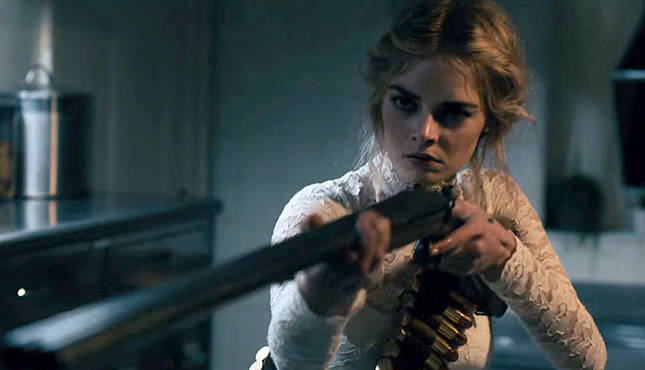May 24, 1988: Timothy McVeigh, Terry Nichols and Michael Fortier enlist in the U.S. Army.
April 1991: McVeigh drops out of eligibility test for Army Special Forces. Dec. 31, 1991: McVeigh receives honorable discharge.

October 1994: McVeigh uses soup cans to show how he would arrange explosives in a V shape inside a truck for maximum destruction. April 17, 1995: McVeigh rents a Ryder truck in Junction City, Kansas. April 18, 1995: McVeigh and Nichols mix a fertilizer and fuel oil bomb at Geary Lake, near Junction City.
April 19, 1995: At 9:02 a.m., the 4,000-pound truck bomb destroys the nine-story Alfred P.
Murrah Federal Building in downtown Oklahoma City, killing 168 people, including 19 children, and injuring 850. The blast damages 312 buildings, 14 of which had to be demolished. People are also reading.
.. Bill addressing tribal toll collections falls in House committee; governor reacts State ends contracts for three large mental health services providers in Tulsa County Ex-police officer changes part of story about chase that killed motorcyclist in Tulsa Mason’s Monday Mailbag: What grade did I give OU football’s offseason so far? Berry Tramel: Why Jimmy Gasso is coaching softball at Mid-America Christian Update: Motorcyclist in critical condition after crash with school bus, Tulsa police say Cry Baby Hill roadside attraction on hold, along with hotel project, Route 66 experience Here's how the sold-out Red Dirt concert event The Boys From Oklahoma became a reality Berry Tramel: Mike Gundy predicts soon-coming super conference of 32 teams Nine measles cases now confirmed in Oklahoma Police probe alleged child sex abuse, coverup at ‘cult’ church following news investigation 5 reasons to believe OU football’s offensive line will be much improved in 2025 Bill Haisten: Remembering the immense talent and personality of Mike Bilbow Epic concert series in Stillwater launches with Cross Canadian Ragweed reunion Opponents of religious charter school: St.
Isidore poses threat to all public charters About 10:20 a.m., Oklahoma Highway Patrol Trooper Charlie Hanger stops McVeigh on Interstate 35 near Billings for driving with no tag on his yellow 1977 Mercury, and McVeigh is jailed for carrying a concealed weapon.
April 21, 1995: Shortly before he is to be released from the Noble County jail on the traffic arrest, McVeigh is identified as a bombing suspect and turned over to the FBI. Nichols surrenders in Herington, Kansas. Aug.
10, 1995: McVeigh, Nichols and Fortier are indicted. Fortier pleads guilty. Dec.
4, 1995: Colorado U.S. District Judge Richard Matsch is appointed to oversee the McVeigh trial.
Feb. 20, 1996: Matsch moves the trial to Denver. Feb.
28, 1997: The Dallas Morning News reports McVeigh admitted to his defense team that he had set off the bomb. March 31, 1997: Jury selection begins in McVeigh’s trial. April 24, 1997: Prosecutors and defense attorneys make opening statements.
June 2, 1997: Jury convicts McVeigh on all 11 counts of murder and conspiracy. June 13, 1997: Jury condemns McVeigh to die by injection. Aug.
14, 1997: McVeigh is formally sentenced to death. Sept. 8, 1997: 10th U.
S. Circuit Court of Appeals affirms conviction. Dec.
23, 1997: Nichols is found guilty on one count of conspiracy and eight counts of involuntary manslaughter. A jury deadlock spares him the death penalty. June 4, 1998: Nichols is sentenced to life without parole.
March 8, 1999: U.S. Supreme Court rejects McVeigh’s appeal.
March 29, 1999: Oklahoma County District Attorney Bob Macy files 160 state murder charges against Nichols and asks for the death penalty. July 1999: U.S.
Senate approves $15 million for Oklahoma City National Memorial Institute for the Prevention of Terrorism. April 19, 2000: President Bill Clinton attends dedication ceremonies for the outdoor Oklahoma City National Memorial. Feb.
18, 2001: The Oklahoma City National Museum is dedicated. The $7.9 million, 30,000-square-foot museum is housed in the old Journal Record Building, which was heavily damaged in the bombing.
June 11, 2001: McVeigh is executed at a Terre Haute, Indiana, federal prison. His remains are cremated and disposed of at an undisclosed location. May 13, 2003: Nichols is ordered to stand trial on state murder charges.
Sept. 13, 2003: Trial is moved to McAlester. March 1, 2004: Jury selection begins in Nichols’ state trial.
May 26, 2004: McAlester jury finds Nichols guilty on 161 first-degree murder counts, one count of arson and one count of conspiracy. June 11, 2004: Jury deadlock again spares Nichols’ life. Aug.
9, 2004: District Judge Stephen Taylor sentences Nichols to 161 consecutive life sentences without parole. Jan. 20, 2006: Fortier is released from prison.
His location is not revealed, prompting speculation that he entered a witness protection program. Jan. 8, 2015: The memorial and museum reopens after a $10 million renovation.
.
Entertainment

Timeline: Oklahoma City bombing

A comprehensive timeline of events before and after the bombing of the Alfred P. Murrah Federal Building in downtown Oklahoma City.















